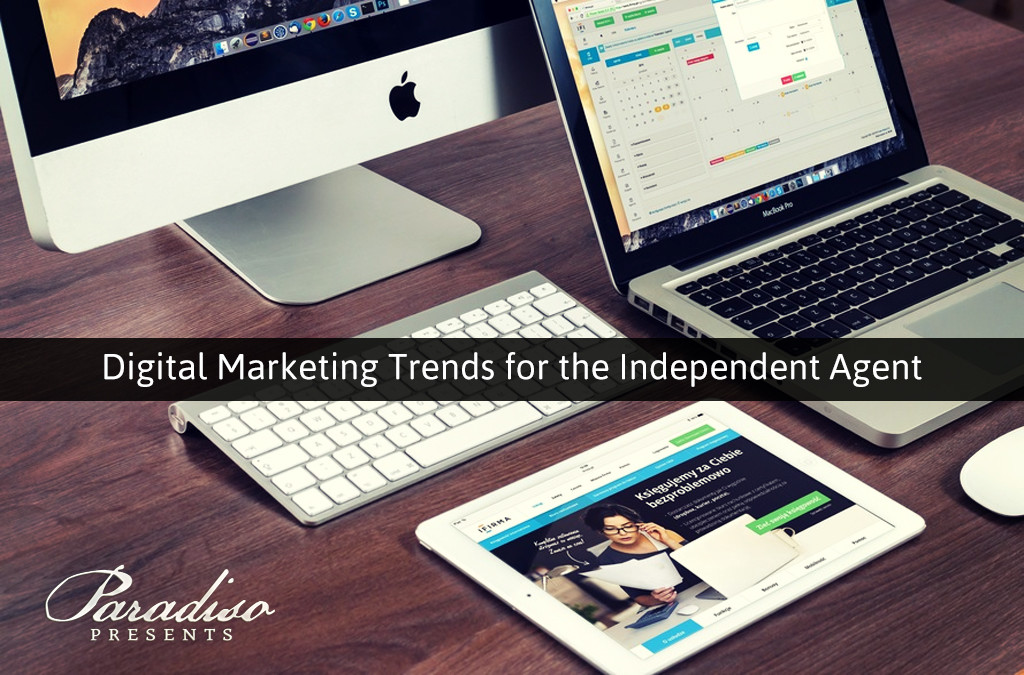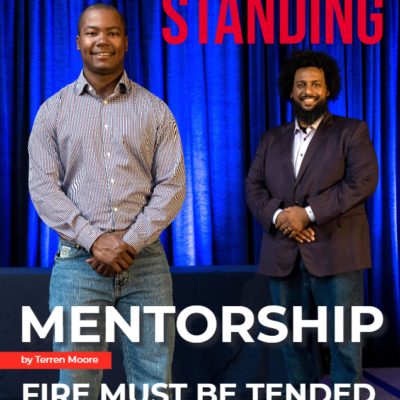When we talk about digital marketing in general, it’s important to note that everything in the digital world moves at an incredibly rapid pace. Consumer demand is rising online, and at an equally fast pace. While digital marketing is one of my agency’s strongest assets (in terms of branding, nurturing client relationships, reaching a wider audience, etc.), we have to realize that change is to be expected within a fast-paced environment. With new trends emerging within the digital marketing arena, instead of fearing what the future has to hold, let’s prepare our agencies for what we can expect from digital marketing in the near future. While change can be a challenge for us at times, it’s important to embrace change so that our agencies will not become stagnant. Today, I wanted to discuss three trends that we can expect to see moving forward with digital marketing. Before we get into that though, it’s important to recognize that we need to be customer-focused when we think about our digital marketing strategies. If we don’t take the time to put ourselves in our customers’ shoes, then we are just throwing ideas up to the wall to see what sticks. Your marketing should be human-centered, focus on storytelling, and focus on personable approaches/relationship building in the social world. Now, let’s talk about some trends we can expect to see in the near future in terms of digital marketing.
What is “just-in-time marketing,” you might ask? Well, it’s a process of applying lean principles to your agency’s digital marketing strategy to make sure that you market only when necessary, and capitalize on marketing moments while minimizing throw away posts. Let’s break that down using a grocery store analogy; when a grocery store makes an order to stock their shelves, they consider several factors that could affect how much sales they will do for each product, and stock them accordingly. If it were Christmas time, they’d have plenty of candy canes ready to go, and if it were Thanksgiving season, then they’d have plenty of turkeys and pumpkin pie, and so on. While they stock up what they’ll need more of, they cut down on what they need less of to avoid waste. This is called applying lean principles, and is a process that we should practice with our marketing. When we track our data, metrics, performance, and engagement, we can see what type of content performs well at what time of the day with certain audiences or social networks and capitalize accordingly. We need to maximize posts that actually connect us with our customers, and minimize what I like to call the “throwaway” posts, or posts that simply don’t get you engagement with your audience online.
- Hyper-personalization
If you’re new to hyper-personalization, this is a process that makes each individual member of your audience feel like you’ve created content just for them. Generally speaking, this strategy is a multi-step process, but hyper-personalization allows you to build a stronger connection with customers, clients, and prospects online, because your posts can be uniquely tailored to reach specific audiences. For example, we recently hosted our Flag Day campaigns at Paradiso Insurance, where we allowed any of the local town residents to come into our agency for some free food at our barbeque, a free Flags from Paradiso Insurance tee-shirt, and a replacement brand new American Flag in exchange for their old flags (which we properly dispose of for our customers and clients). Now, when it came time to share our experiences in a recap of flag day, we created a video and a blog to push out via social media. When we paid for boosting this social media content via Facebook, we were able to target specific audiences. We chose to target people within a 25 mile radius of our hometown of Stafford Springs, who were interested in patriotism, American Flags, veterans, and more similar interests on Facebook, who were also within a 30-50 year old demographic (since that age group makes up a large majority of our client base). When these folks saw our sponsored content hit their newsfeed, it really hits home for them, because they were our local patriots, and they could especially appreciate the content we were pushing out, since it was hyper-personalized. You can apply these fundamentals to any interests and/or demographics to make sure that your agency’s content reaches the right audience as well.
- Drawing the Line Between Advertising and Marketing
In terms of the digital arena, but also traditionally speaking as well, marketing and advertising have always been considered to be part of two separate camps. On one end of the spectrum is advertising, or trying to reach the widest possible audience with branded content and promote your agency’s messages to new prospects. On the other hand, there’s marketing, where we nurture our relationships with our customers and clients through direct engagement, such as email marketing campaigns, direct mail, or following up with phone calls before renewals. Both marketing and advertising are important to the overall customer experience, but it’s important that we keep them as separate entities. As we observe the digital marketing arena, like we said earlier, change happens at a rapid pace, and the customer’s journey is getting more complex by the day. We have to be able to connect with our customers at each step of the journey, this way we can build and manage long-lasting and rewarding relationships. While a lead is still considered a prospect, we should be aiming to connect with them through either word of mouth referrals or sponsored content that properly represents our brand and agency message, this way we can “invite” them into our agency overtime and give them a glimpse of what the overall customer experience is like when they come into our agency. Once we establish a connection, we should be reminding them that they are important to us on a regular basis, whether that’s wishing them a happy birthday, directly connecting with them during holidays or special occasions, including them on company events, or keeping them informed on any changes of their policy or renewal times. Each step of the process is important though, that much I can say for sure.
Some agency owners believe that it’s only important to reach new prospects regularly, and I would have to disagree with them. Renewals are a huge part of our agencies’ revenues, which is why nurturing your existing relationships is critical to your agency’s success. Maintaining trust with an existing customer is a lot easier than building trust with a brand new customer, so it makes sense to have a special focus on nurturing your existing relationships. Not to mention, building new relationships means that you’re putting new money in your pocket, while missing out on a renewal means taking money out of your pocket that’s already there… and nobody wants that.
Overall, I hope these three trends were a bit of an eye opener for some of us, and I’m especially hoping it will help you and your agency prepare for conquering the digital marketing arena in the near future. If you have any other interesting ideas to prepare for what’s ahead, I’d love to hear about them in the comments section below. To all Independent Agents and Brokers, happy marketing!





